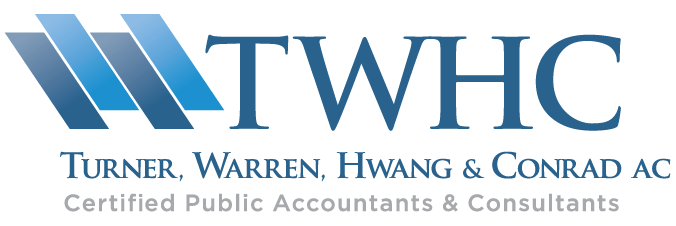Congressional and Administration negotiators reached agreement on the Phase 3 COVID-19 economic stimulus bill early Wednesday morning and just released the legislative text this hour. The Senate and House hope to pass the $2 trillion legislation as quickly as possible.
What’s in the Bill for Not-For-Profits
The Coronavirus Aid, Relief, and Economic Security Act (CARES Act) (S. 748) provides significant funding for businesses, hospitals, schools, and social support programs, among many other things. Below are key Not-For-Profit issues of sector-wide interest on which advocates have been most active. These are based on an initial analysis of the nearly 900-page bill. More details may become apparent with more thorough analysis.
Emergency Small Business Loans (emergency SBA 7(a) loans): Provides funding for special emergency loans of up to $10 million for eligible Not-For-Profits and small businesses, permitting them to cover costs of payroll, operations, and debt service, and provides that the loans be forgiven in whole or in part under certain circumstances.
- General Eligibility: Available to entities that existed on March 1, 2020 and had paid employees.
- Not-For-Profit Eligibility: Available for charitable Not-For-Profits with 500 or fewer employees (counting each individual – full time or part time and not FTEs). The final bill does not include a provision in earlier drafts that would have disqualified Not-For-Profits that are eligible for payments under Title XIX of the Social Security Act (Medicaid).
- Loan Use: Loan funds could be used to make payroll and associated costs, including health insurance premiums, facilities costs, and debt service.
- Loan Forgiveness: Employers that maintain employment between March 1 and June 30 would be eligible to have their loans forgiven, essentially turning the loan into a grant.
Economic Injury Disaster Loans (EIDL): Eliminates creditworthiness requirements and appropriates an additional $10 billion to the EIDL program so that eligible Not-For-Profits and other applicants can get checks for $10,000 within three days.
Self-Funded Not-For-Profits and Unemployment: Only reimburses self-funded Not-For-Profits for half of the costs of benefits provided to their laid-off employees.
Charitable Giving Incentive: Includes a new above-the-line deduction (universal or non-itemizer deduction that applies to all taxpayers) for total charitable contributions of up to $300. The incentive applies to contributions made in 2020 and would be claimed on tax forms next year. The bill also lifts the existing cap on annual contributions for those who itemize, raising it from 60 percent of adjusted gross income to 100 percent. For corporations, the bill raises the annual limit from 10 percent to 25 percent. Food donations from corporations would be available to 25 percent, up from the current 15 percent cap.
Self-Funded Not-For-Profits and Unemployment: Only reimburses self-funded Not-For-Profits for half of the costs of benefits provided to their laid-off employees.
Employee Retention Payroll Tax Credit: Creates a refundable payroll tax credit of up to $5,000 for each employee on the payroll when certain conditions are met. The entity had to be an ongoing concern at the beginning of 2020 and had seen a drop in revenue of at least 50 percent in the first quarter compared to the first quarter of 2019. The availability of the credit would continue each quarter until the organization’s revenue exceeds 80 percent of the same quarter in 2019. For tax-exempt organizations, the entity’s whole operations must be taken into account when determining the decline in revenues. Notably, employers receiving emergency SBA 7(a) loans would not be eligible for these credits.
Industry Stabilization Fund: Creates a loan and loan guarantee program for industries like airlines to keep them solvent through the crisis. It sets aside $425 billion for “eligible business” which is defined as “a United States business that has not otherwise received economic relief in the form of loans or loan guarantees provided under” the legislation. It is expected, but unclear, whether charitable Not-For-Profits qualify under that definition for industry stabilization loans. Mid-sized businesses, including Not-For-Profits, that have between 500 and 10,000 employees are expressly eligible for loans under this provision. Although there is no loan forgiveness provision in this section, the mid-size business loans would be charged an interest rate of no higher than two percent and would not accrue interest or require repayments for the first six months. Not-For-Profits accepting the mid-size business loans must retain at least 90 percent of their staff at full compensation.
Other Significant Provisions
Direct Payments to adults of $1,200 or less and $500 per child ($3,400 for a family of four) to be sent out in weeks. The amount of the payments phases out based on earnings of between $75,000 and $99,000 ($150,000 / $198,000 for couples).
Expanded Unemployment Insurance: Includes coverage for workers who are furloughed, gig workers, and freelancers. Increases payments by $600 per week for four months on top of what state unemployment programs pay.
Amendments to the New Paid Leave Mandates: Lowers the amounts that employers must pay for paid sick and family leave under the Families First Coronavirus Response Act (enacted March 19) to the amounts covered by the refundable payroll tax credit – i.e., $511 per day for employee sick leave or $200 per day for family leave.
Significant Spending: The bill also calls for large infusions of cash to the following sectors:
- $150 billion for a state, tribal, and local Coronavirus Relief fund
- $130 billion for hospitals
- $30 billion for education
- $25 billion for transit systems





